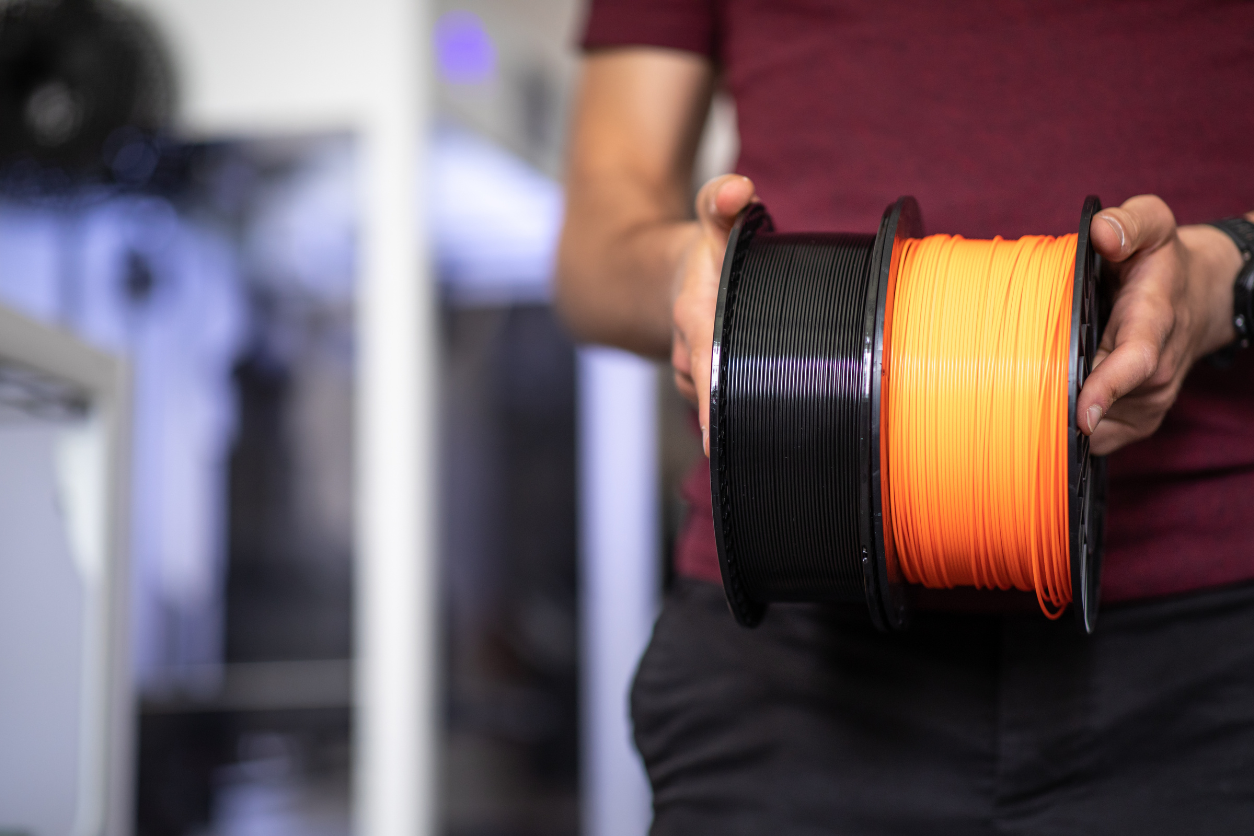How to Properly Store and Care For 3D Printer Filament

In recent years, 3D printing has rapidly become one of the most popular hobbies for DIYers. As this technology becomes more accessible and affordable, more people are figuring out how to make money with a 3D printer by creating their own original designs. Like with any materials production, using this tool involves the responsibility of storing and caring for 3D printer filament, which is the material used to produce prints and objects.
In this post, we’ll cover how to properly store and care for 3D printer filament to help you create high-quality projects. We’ll also discuss how to prevent contamination and safely dispose of used filament. Read on to learn more about getting the most out of your 3D printer and its materials!
The Importance of Properly Caring for 3D Printer Filament
The filament is the main material responsible for producing 3D-printed objects. Over time, the filament can become contaminated or degrade if not stored correctly. If left exposed to the environment, then it can absorb moisture which may cause clogs in the printer nozzle. The contaminated or degraded filament can ultimately produce inconsistent results when used in a 3D printer. By taking steps to store and care for the filament properly, you can ensure that your designs are printed consistently and reliably while also prolonging the usefulness of your materials.
Preparing and Storing the Filament
Once you’ve opened a spool of 3D printer filament, you’ll need to trim it 2-3 inches from the end before loading it into your printer. This will help ensure that any potential contaminants on the end of the filament don’t impact printing. After cutting off the end of your filament, store the unused portion in an airtight container in a cool, dry place to avoid any moisture contamination.
Avoiding Contamination while Printing
When printing with 3D printer filament, it’s important to avoid any contaminants from coming into contact with the material. This means that any parts or tools used while printing should be kept clean and free from dust and debris. Additionally, be sure to always keep a lid on your 3D printer when it’s not in use to help reduce exposure to dust particles that could contaminate the nozzle or print surface.
Preventing Moisture Contamination
To achieve consistent prints, it’s essential to keep your 3D printer filament dry at all times. When storing your filament, make sure you use an airtight container like a vacuum-sealed bag or jar with a silicone seal lid to help reduce exposure to moisture from humidity in the air. Additionally, regularly check your spools of filament for signs of moisture such as condensation or separation between layers of material that have multiple colors of filament wound together. If you notice any signs of moisture contamination then replace your 3D printer filaments immediately as they won’t produce reliable prints.
Disposing of Used Filament
Once you’ve finished using a spool of 3D printer filament or have to replace a contaminated one, you need to make sure you dispose of it properly. Never throw away used 3D printer filaments in the regular garbage as they can be hazardous materials if not handled correctly, potentially releasing harmful fumes when heated. Check for any local regulations about disposing of these materials before discarding them. Some municipalities offer recycling options for used filaments so it’s worthwhile to see if your local city or county office has information about recycling 3D printer filaments.
Conclusion
If you have a 3D printer, it’s essential to maintain your materials for optimal results. By taking the time to learn about how to properly store and care for 3D printer filament, you’ll be able to confidently create high-quality, precise prints. We hope these tips can help you get the most out of your 3D printer, whether you’re a hobbyist or a DIYer that has a side hustle for selling your projects.
Your Trust, Our Core Commitment
At Rising Tech, earning and maintaining your trust is the cornerstone of our mission. We're dedicated to transparency, impartiality, and the relentless pursuit of truth in every article, review, and recommendation we publish. Our commitment to these principles ensures that you, our valued reader, are always equipped with reliable and unbiased information. Let us be your trusted guide in the ever-evolving world of technology.